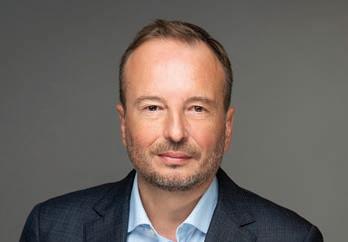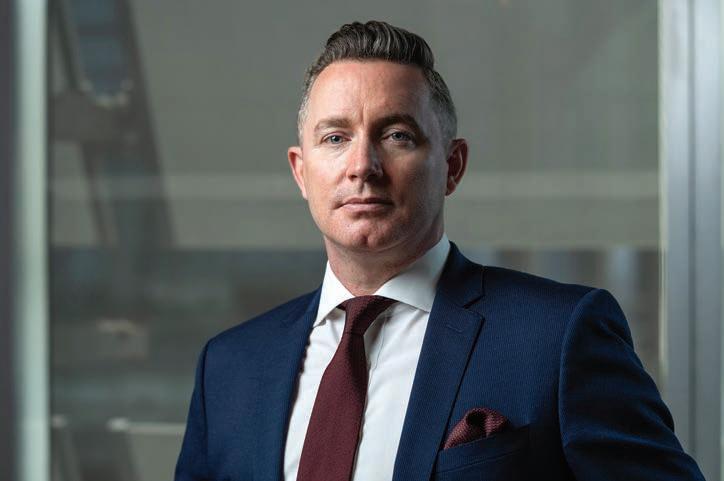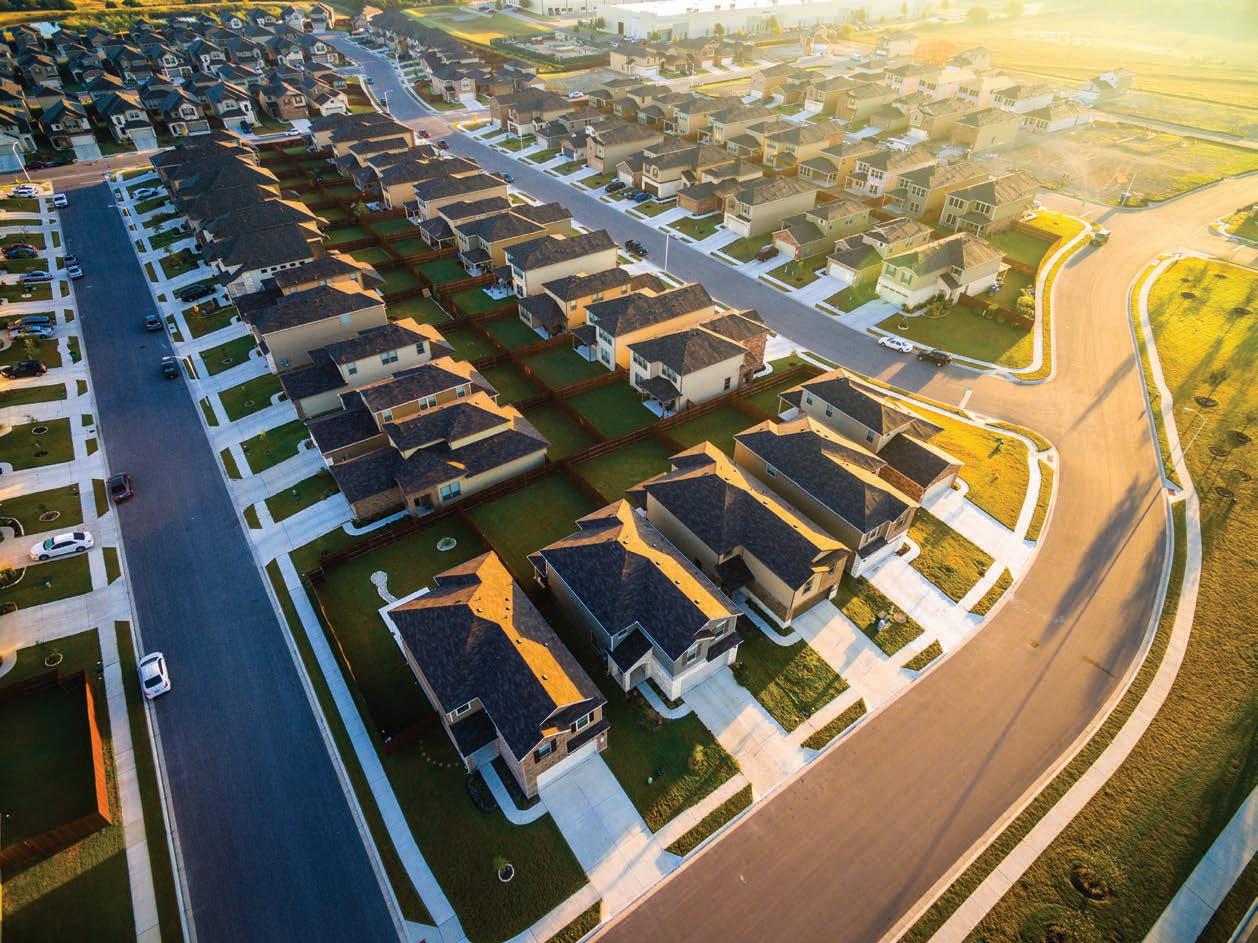
5 minute read
Uptrend Likely Continues
Anita Krishna Gupta, Anita Krishna Gupta, Head of Equity Strategy, CIO Office, Wealth Management Emirates NBD
The Middle East’s equity landscape is changing: a broadening sectoral mix of retail, utility providers, health services, or services, along with recent legislations supporting foreign investment, residency and tourism, have brought it into the global investor’s spotlight – who also appreciate the solid currency peg to the dollar. However, trading volumes still have a long way to go as does the percentage of overseas investor holdings compared to some other emerging markets. This is a concern for now, but a great catalyst for performance in the future. Middle Eastern countries that are petrochemical exporters, have largely outperformed EM and global peers since Feb 2021, contiguous with the rise in oil prices and the spill through to the economy. GDP growth has surprised to the upside, in a world where growth numbers are seeing continuous downgrades. Twin surpluses–fiscal and current account balances—have supported investment in Anita Krishna Gupta Head of Equity Strategy, CIO Office, Wealth Management Emirates NBD tells us why equities are doing well at this time, changing the landscape of the market and currently a bright spot in comparison with the rest of the world
Advertisement
infrastructure—the UAE rail network, giga projects in the KSA such as Neom city, and a continuous focus on technology.
GCC markets are up 13% year to date, led by the UAE, KSA, Kuwait and Qatar, and haven’t seen performance discounted by the stronger US Dollar. By comparison, global equities are down 15% in the same period. Whilst EM equities have no correlation to the rise in oil prices, Middle East equities provide a diversified investment vehicle for profiting from oil rallies, but it’s not all about oil with continuing investment in diversification. Is the Middle East rally sustainable if oil prices fall? It should in the medium term, as the regional indices, except for the KSA are not petrochemical focused.
Recent investor roadshows have been instrumental in bringing in more direct institutional demand for the KSA and UAE markets and also as their weight in global indices ( MSCI, S&P,FTSE) grows and attracts direct passive and active
Exhibit: GCC equity performance correlated to oil prices, will benefit
with diversification of the bourses
260
220
180
140
100
MSCI GCC
Brent Oil CO1
Tadawul KSA
MSCI UAE
MSCI EM
60
20
2017 2018 2019 2020 2021 2022
Source: Bloomberg, CIO-Office as of 24th August 2022, Net return MSCI indices for GCC and EM
fund flows. The KSA has a 4.7% weight in the MSCI EM index with 37 member companies, the UAE 1.3% with nine members, Qatar 1.2% with 12 members and Kuwait 0.9% with seven members.
A big constraint to investing in the region for offshore retail investors, has been that local brokerage accounts are the only way to buy stocks and investors are not keen to have multiple trading accounts in foreign jurisdictions or in some cases are not eligible to trade local equities. The ADR/GDR instruments which are typically dual listings in UK/ US jurisdictions have not been used by regional corporates as a tool for attracting overseas investors. More recently the large global asset managers have introduced ETFs, both US domiciled and UCITS compliant for the more liquid Middle East markets. This provides a more accessible investment vehicle and also a broader exposure to equity markets. Also, the increasing Foreign Ownership Limits (many corporates have almost 100% of free float with no restrictions on foreign investment) have made regional equities more accessible.
Whist high oil prices remain supportive for the region, the focus on non-oil revenue, digitisation of services and adoption of technology in every sphere are sustainable drivers of growth. Valuations remain attractive with the MSCI GCC at 12X forward earnings and 1.5X Price to Book, much lower than comparative EM peers, barring China. The region has also shown a divergence from global markets in performance, as besides the obvious beta to higher oil prices, the higher dividend yields have made the region attractive in a rising inflationary environment. Right from banks and utility providers across the Middle East, to petrochemical companies in the KSA and telecom companies in the UAE, it’s not only the attractive dividend yield but the quality of the dividend with growth and the sustainability of payouts through different cycles which makes these high dividend payers good long-term investments. With a large representation of banking stocks, the Dubai Index offers one of the highest dividend yields globally at 3.7%. Banks regionally have high CASA deposit ratios which makes them benefit from rising policy rates. The real estate developers have seen share prices rise, though not great dividend payers, reflecting the pickup- in off plan and secondary residential sales and rental increases in the UAE and the global real estate uptrend as people sought higher end housing as a result of pandemic lock downs. Dubai has become a preferred destination for
expats on account of its remarkable handling of the pandemic. The recent alignment of the UAE with international trading days, through the reform of the working week, is another positive for inflows and improved trading volumes.
Importantly, new issuance has added to the depth and breadth of the region. Saudi Aramco set the pace in the KSA in Nov 2019, followed by Nahdi Medical, ACWA Power, Saudi Tadawul to name a few and illustrate the industry diversification. Strong post listing performances are encouraging further issuance. Abu Dhabi Ports, Borouge, Fertiglobe, ADNOC Drilling and Yahsat did the same to the Abu Dhabi market depth. In Dubai, there are 10 state-controlled entities listing underway with DEWA and TECOM already successfully listed. Family-owned businesses are increasingly attracted as well. The Dubai authorities are focused on improving market breadth and liquidity with a market maker fund and an AED 1bn fund to encourage technology companies to list on the local bourse. Combined with easing restrictions on foreign ownership
this could increase the weight of the Middle East stocks in EM indices and inflows from international investors. Overlaying corporate culture is a focus on green initiatives. The UAE property code promotes green and efficient buildings. Corporates Aldar and Emaar, among others, already have sustainability frameworks in place. The KSA is investing in hydrogen initiatives. The region is harnessing solar power. It’s not just about oil for the region—there’s still a long pathway of returns, but like all markets there will be rallies and pullbacks.
Exhibit: GCC markets still at attractive valuations
Index Country Level TR YTD TR 2021 Market cap USD bn Forward P/E Forward P/B Dividend Yield Daily Traded USD Value 6 month










